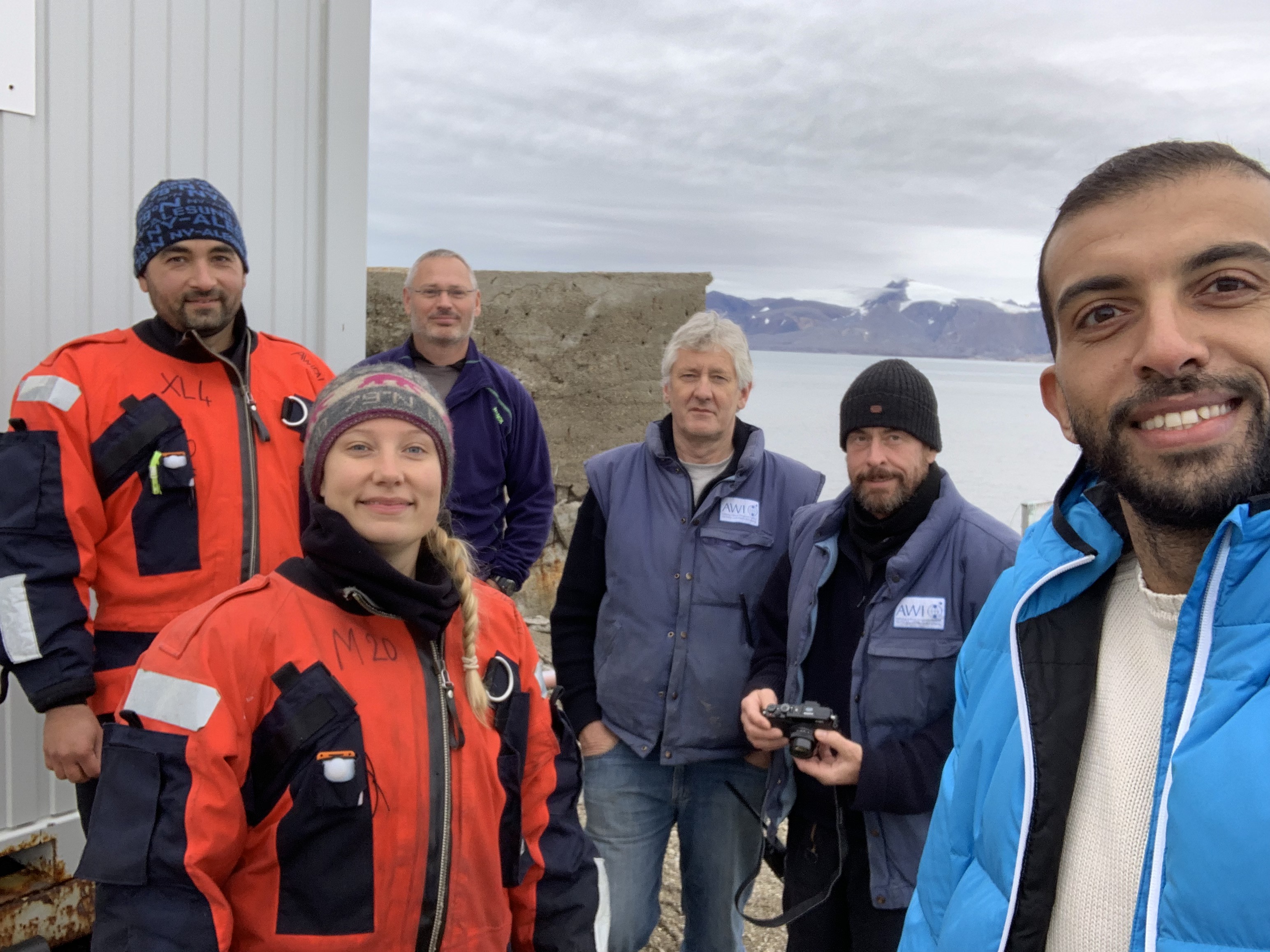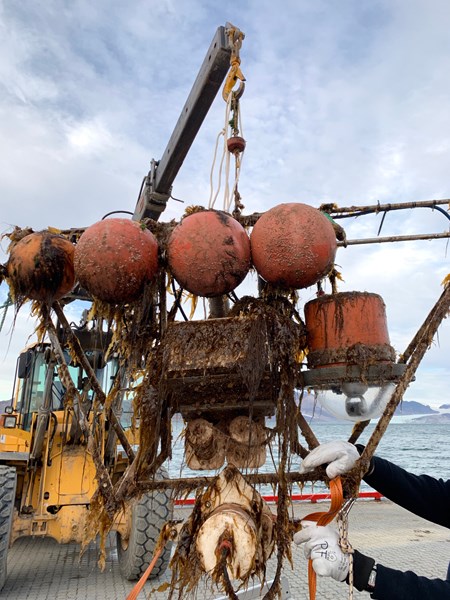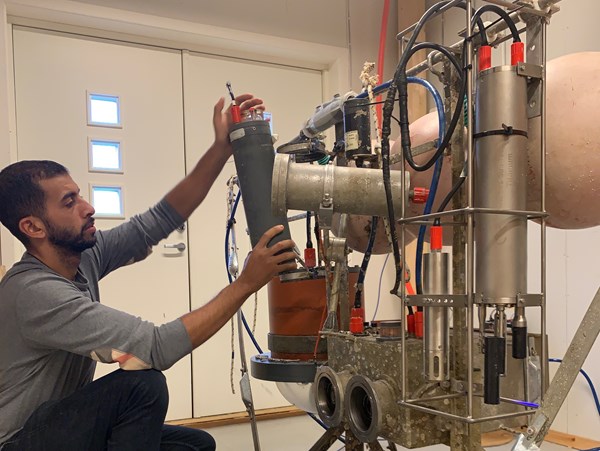
The Arctic team (AWIPEV). From left to right: Markus, Lisa, Uwe, Philipp, Max and Samir.
INTAROS researchers from Alfred-Wegener-Institut (AWI), Germany, and French National Center for Scientific Research - French Polar Institute (CNRS - IPEV, France), returned to their multi-seasonal field site in Svalbard recently to continue their studies of Arctic Ocean chemistry. This team is the first to study the carbonate chemistry of the seawater in the Arctic Ocean.
The AWIPEV-COSYNA Svalbard Underwater Observatory was initiated in 2012 by installing a remote operated permanent ferrybox system and an underwater profiling sensor unit in Kongsjorden. The observatory comprises a land based FerryBox system and a profiling sensor unit under water.
The FerryBox is equipped with multiple sensors (since 2012: Temperature, Conductivity-Salinity, Oxygen, Chlorophyll A, Turbidity) and was upgraded in 2015/2016 with additional sensors for pCO2, Total Alcalinity (TA) and pH. These variables are key to monitoring the Arctic environment, particularly in terms of ocean acidification. The system is operated year round, allowing constant monitoring of the environment.

The underwater observatory (UWO) being removed from the sea for maintenance.
The Underwater Unit is equipped with a CTD sensor to measure Temperature, Conductivity-Salinity, Oxygen, Chlorophyll A, Turbidity, a PAR sensor, a pH sensor and a custom made stereoscopic fish observatory and a Webcam. This unit is fully remote controlled and can profile between 11m water depth and the surface. Additionally, an upward looking stationary ADCP is positioned in 13m water depth (Teledyne, 1200 Hz). As the FerryBox, also the underwater unit is operated year round. The webcam is permanently online.
Data are automatically transferred every hour to the AWI Near-Realtime-Database (NRT) of the AWI computing center in Bremerhaven, Germany, where they are shown as averages per hour. Data are then post-processed (including quality checks) depending on their use and finally stored as datasets in Pangaea.

Maintenance on the UWO after cleaning. Putting back the pH sensor before to deploy the unit again.
For more news about the INTAROS Summer Fieldwork Season 2019, stay tuned to our website and social media.
You can check out all the observing sites assessed by INTAROS in this interactive map.
10 September 2019